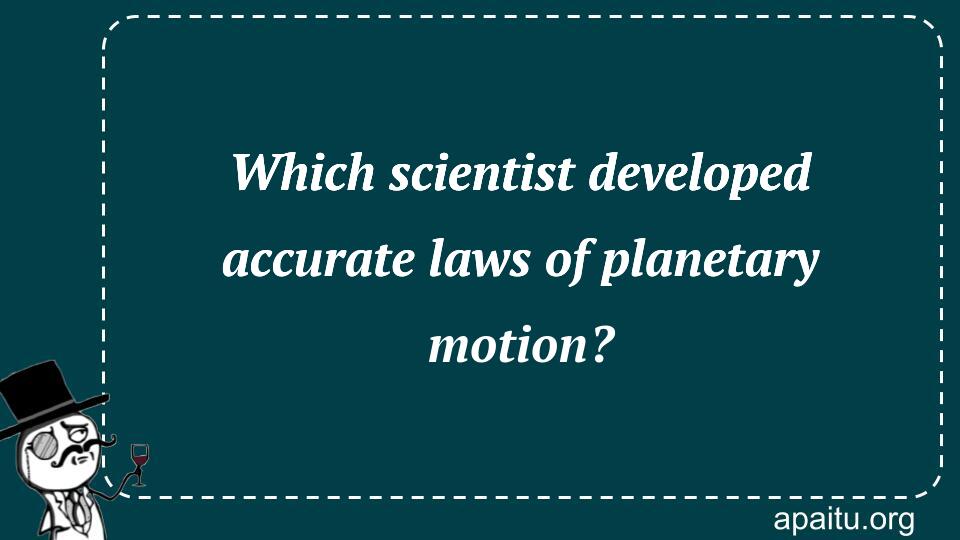Question
Here is the question : WHICH SCIENTIST DEVELOPED ACCURATE LAWS OF PLANETARY MOTION?
Option
Here is the option for the question :
- Charles Darwin
- Michael Faraday
- Johannes Kepler
- Nikola Tesla
The Answer:
And, the answer for the the question is :
Explanation:
German astronomer Johannes Kepler (1571-1630) made detailed observations of the sky and applied strong mathematical understanding to formulate new rules of planetary motion. First to precisely define how solar system objects orbited one another, these laws paved the way for subsequent discoveries like Newton’s idea of universal gravity.

Johannes Kepler was a German mathematician, astronomer, and astrologer who is best known for his accurate laws of planetary motion. These laws fundamentally transformed our understanding of the solar system and set the stage for the development of modern astronomy.
Kepler was born in Weil der Stadt, Germany in 1571. He demonstrated an early aptitude for mathematics and astronomy, and went on to study at the University of Tübingen. After completing his studies, Kepler became a mathematics teacher in Graz, Austria, where he began his work on planetary motion.
At the time, the prevailing model of the solar system was based on the ideas of the ancient Greek astronomer Ptolemy. According to Ptolemy, the planets moved in circular orbits around the Earth, with additional circles called epicycles to account for their sometimes erratic motion. While this model could predict the positions of the planets with a reasonable degree of accuracy, it was increasingly clear that it did not accurately reflect the true nature of the solar system.
Kepler’s breakthrough came in the form of three laws of planetary motion. The first law, known as the law of elliptical orbits, states that the planets move in elliptical orbits around the Sun, rather than in circular orbits around the Earth. This law explained many of the discrepancies in the observed motion of the planets and was a significant departure from the prevailing view of the solar system.
The second law, known as the law of equal areas, states that a line connecting a planet to the Sun sweeps out equal areas in equal times. This law explained why planets move faster when they are closer to the Sun and slower when they are farther away.
The third law, known as the harmonic law, relates the orbital period of a planet to its distance from the Sun. Specifically, it states that the square of a planet’s orbital period is proportional to the cube of its distance from the Sun. This law allowed astronomers to calculate the relative distances of the planets from the Sun, which had previously been unknown.
Kepler’s laws of planetary motion were a major step forward in our understanding of the solar system and paved the way for future advances in astronomy. However, they were not immediately accepted by the scientific community. In particular, the idea that the planets moved in elliptical orbits was seen as a radical departure from established thinking and was met with skepticism.
Kepler’s laws eventually gained widespread acceptance and became a cornerstone of modern astronomy. Today, they are taught in physics and astronomy courses around the world and are considered one of the most important contributions to the field of astronomy.
Kepler made significant contributions to other areas of science, including optics and the study of supernovae. He also had a deep interest in astrology and believed that the positions of the p